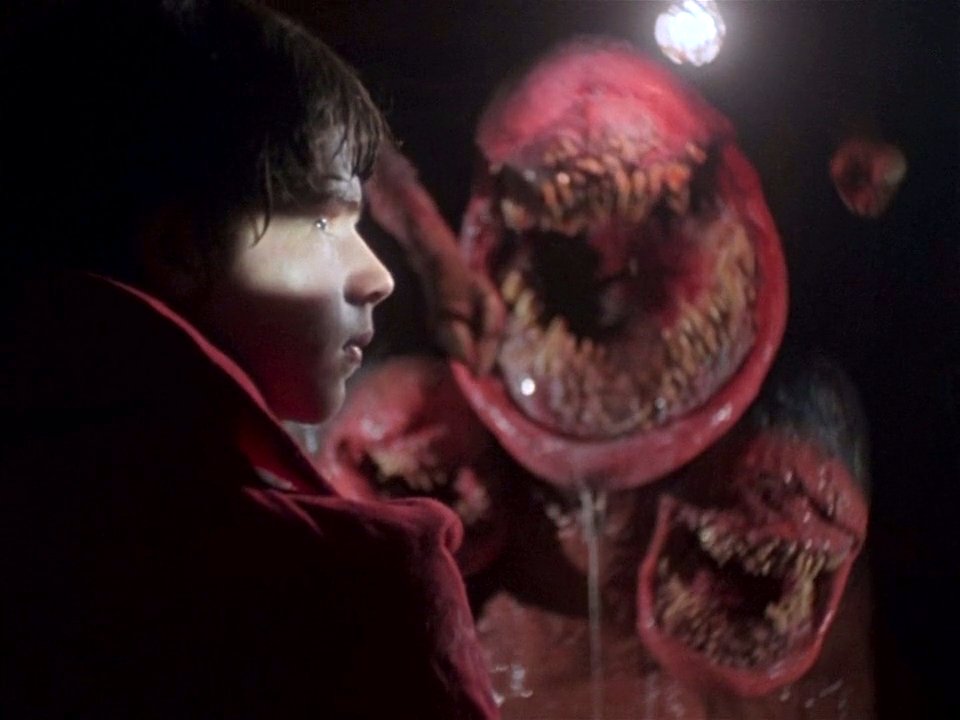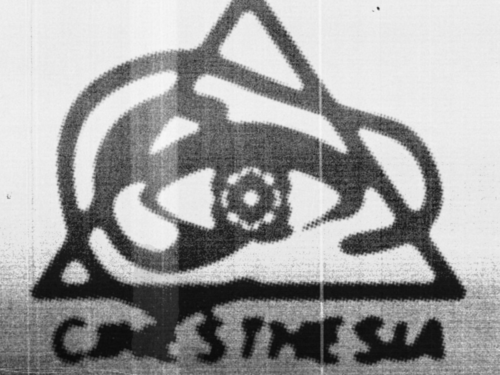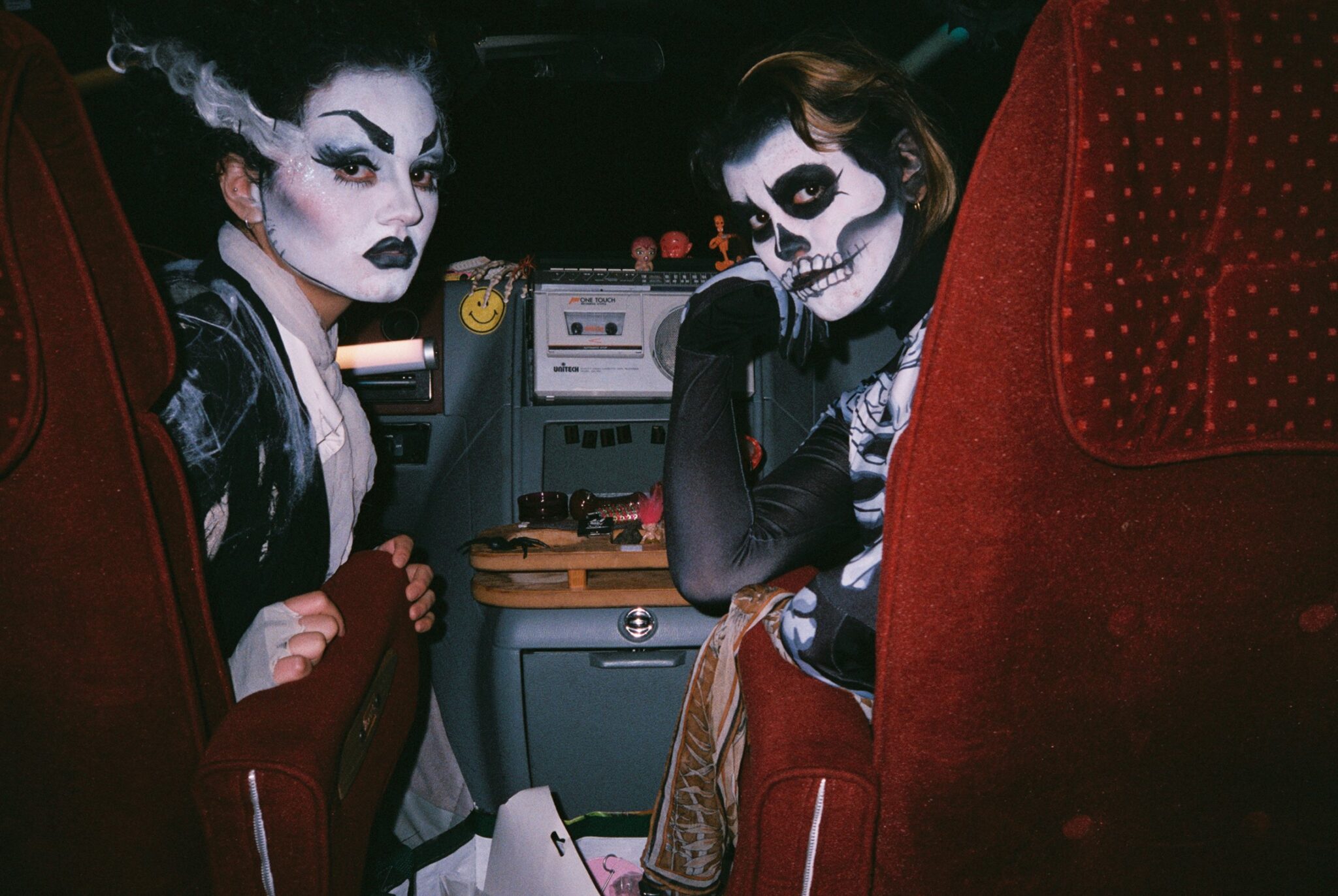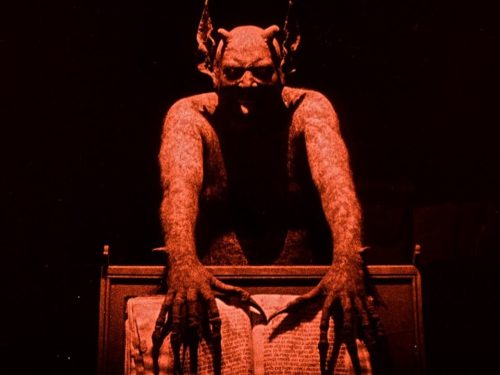Sporting some of the greatest low-budget monsters ever created, Deadly Spawn brings flesh-eating space worms into suburban New Jersey
There’s no sin worse than accidentally serving a meat dish at grandma’s vegetarian luncheon, even if the space worm climbed into the food processor on its own. Just hours after crash landing on Earth the flesh-hungry worms of The Deadly Spawn (1983) have crawled out of a meteorite and made themselves right at home in a New Jersey suburb. At a tight 81 minutes, Deadly Spawn wastes no time. The first shots are of the meteorite crashing to Earth and two campers who go to investigate. The intro is similar to 1982’s Nightbeast, in which a space alien crashes to Earth, campers go investigate, and the trigger-happy Nightbeast steps out in his silver space suit and starts blasting everyone in sight with a ray gun.1 The creatures in Deadly Spawn are introduced more mysteriously. We’re unsure of what exactly crawls out of this meteorite, but the first veiled glimpses suggest something large, toothy, and vicious. One camper’s fate is shown only by blood splattering on the glasses he dropped on the ground. The other’s death happens inside the dark tent, his bloody hand falling just outside. Afterwards, a monstrous silhouette resembling the beast from Alien is cast upon the tent. From there, the worms find refuge in a basement where a window was left open overnight.
On this lazy, rainy weekend, a family wakes to find their home has some unexpected visitors. The morning begins with the parents trying to jumpstart the day, only to find the hot water is out. The father (James Brewster) heads to fix the water heater and discovers the basement is flooded. Despite catching on that something isn’t right, his instincts are too slow to save him. Some grisly snarls and blood splattering on a lightbulb tell of his demise. His wife (Elissa Neil) soon ventures down to see what’s taking him so long. She, too, meets the new inhabitants, but in a great reveal shot, her husband’s severed arm grabs her shoulder. It’s dangling from the monster’s mouth, who then peels a generous slice of her face off. It’s our first proper introduction to the worm invaders, and oh, what an entrance they make.
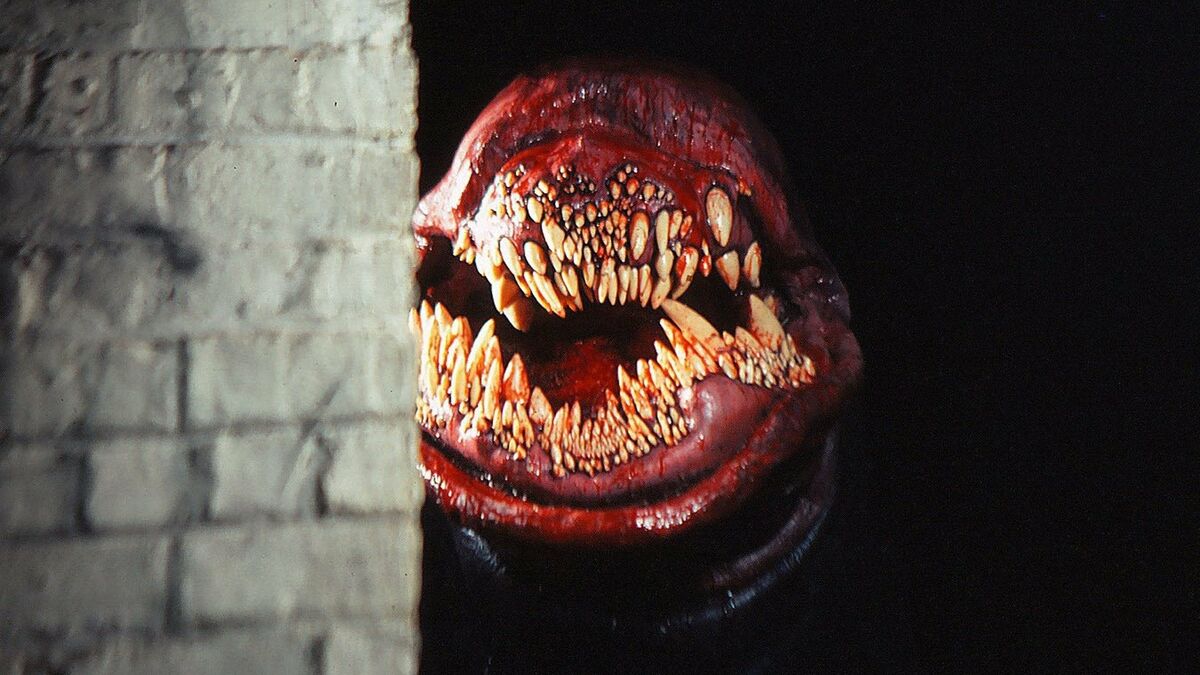
These worms have more teeth than a prepubescent shark and grow larger with each bite of flesh. They slither like snakes and attack like piranhas. They have no eyes or noses and they’re 60 percent teeth. They always seem to be smiling like crocodiles waiting for prey to walk into their mouths. The rows of teeth are almost disorienting; they lull you in with their hypnotic patterns before the chomping commences. Put simply, these worms are among the all-time great low-budget horror monsters.
As the rest of the family starts to wake up, they see no reason to worry about the parents’ absence. They left a note saying they’d be gone all day. Charles (Charles Hildebrandt) is the hero of the film. He’s a red-cape wearing, horror-obsessed teen who wants nothing more than to scare anyone in his vicinity by dressing up as a monster-masked magician and dazzling with some quick tricks. His older brother, Pete (Tom DeFranco), is studying science in college and has a study group due to arrive at the house in a few hours. Aunt Millie and Uncle Herb are in town visiting. Millie (Ethel Michelson) is bound for grandma’s luncheon, and Herb (John Schmerling) spends most of his day reading and napping in a recliner.
Charles’ parents left hints that they’d like Uncle Herb to sit down with him for a psychological examination to try to make sense of his monster obsession. Herb tells Charles he’d like to use him as a case study for an upcoming conference. He asks about nightmares and favorite monsters, and whether Charles can separate the fictional monsters from reality. The boy makes it clear that horror’s appeal is that he’s able to draw a line between fantasy and reality. He knows none of the monsters are real, and that’s precisely why they’re fun. But Herb then asks Charles: “Can you scare me right now?” It’s clear to Charles that Herb has absolutely no idea how being scared works. But this proves inspirational. Almost immediately after being questioned about his love of all things frightful, Charles heads down to the basement dressed in full costume to scare a visiting electrician in the basement. He’s still set on scaring others, but he finds that the line between fictional monsters and reality has been breached.
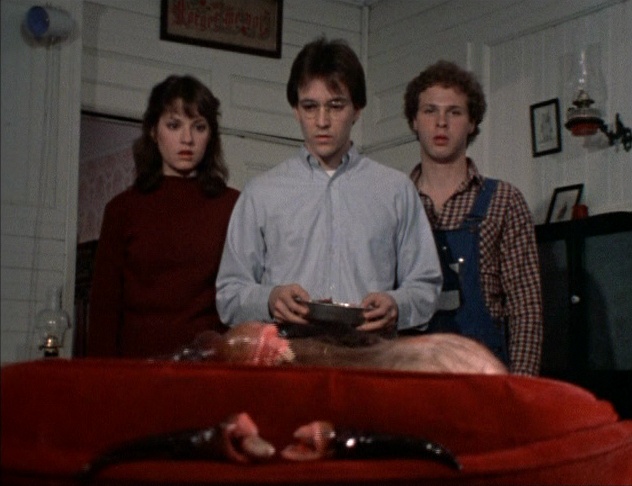
Charles and his brother Pete are a strong duo for a horror film. Pete is a by-the-books science student who refuses to use his imagination. He has a crush on Ellen (Jean Tafler) from his study group. When she and Frankie (Richard Lee Porter) show up with a dead worm they found on the walk over, Pete clashes with her over the impossibility of their find. She dissects it on a pie tray and notes that its organs are arranged unlike any she’s ever seen before. With a half-joking tone she suggests that maybe these alien-like creatures are from outer space. He struggles to stray from the scientific method but takes it personally when Ellen does. On the opposite end, Charles is all imagination. His obsession with horror films and monsters has left him desensitized to the point of being detached from reality. When faced with these fantastic creatures, he becomes a cold-blooded logician with a penchant for the macabre. What other character can make no audible noise at the sight of his own mother’s decapitated head being devoured by alien creatures? Charles is the anti scream queen. In the face of terror, he’s stoic and quietly packs his pockets with every tool he may conceivably need. In its battle of Human Vs. Beast, the film plays with what happens when we approach the borders of accepted reality. You can either question and deny it, or figure out what needs to happen next to stay alive.
Deadly Spawn uses its tropes well. It takes the simplistic and oft-exploited concept of What if this really small alien crash landed on Earth and became a massive, bloodthirsty killing machine? But it ditches the traditional storyline of these films by not following the police or a scientific emergency crew responding to the invasion. This movie is about the monsters and the havoc they wreak, mostly on a single home. In fact, making the monsters the star resulted in a crew disagreement that saw the director dismissed by the writer/prop master because he felt his creations demanded more of the spotlight.
Shot for around $25,000, Deadly Spawn was made without a full script. It began when John Dods and Ted Bohus met at a sci-fi convention and decided they wanted to make a movie together. Like most of the cast and crew, they had little film experience. Dods reached out to Douglas McKeown, a local actor and theater director whom he knew from childhood and a few stage productions they’d both been a part of. Outside of a few homemade short films in his youth, some college projects, and a documentary he created with a school film society, McKeown also had a limited film resume. But like Dods, he had a love for horror and creating monsters, and, most importantly, he knew how to shoot cheaply and efficiently. In Stephen Thrower’s Nightmare USA, an essential history of American underground horror and exploitation films, McKeown recalls the filming process, which he says began without a written ending and was shot mostly in sequence. The original pitch by Dods and Bohus was for McKeown to direct the actors so they could direct the rest of the film. When he told them that type of arrangement didn’t exist, he was brought in as the sole director. Bohus and Dods planned to make up all the dialogue as they shot. It was a freewheeling approach, but they had the essential element in place: Dods’ monsters. Bohus and Dods also agreed to aim for an “R” rating to make it seem like a legitimate horror movie, and gore was their ticket.
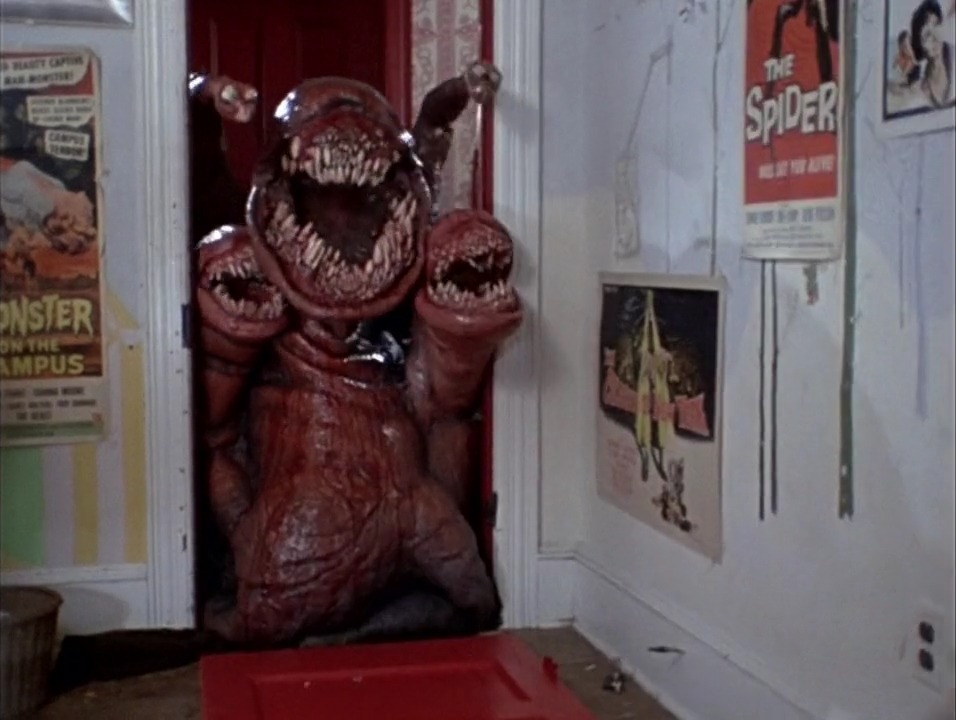
As shooting progressed, they faced the typical hurdles of independent horror filmmaking. Actors were volunteers and therefore had limited time available. The story required rainstorms, but production took place in the middle of a historic drought. Tensions reached a boiling point when Dods called McKeown and told him he wanted to take over as director of Deadly Spawn. McKeown was in essence kicked off the shoot, which continued in pieces for more than a year. The two parties never shared a script. In fact, only McKeown knew a script existed and took it with him after he was booted. He saw the completed film for the first time when it premiered. In the end, Bohus, Dods, and McKeown share writing credits and McKeown’s name is listed as the director. But somehow the two parties’ diverging visions ended up fitting together convincingly. In the end, it does become a showcase for the monsters, but the humans in combat with them propel the story. It’s a marriage of the fantastical and the pragmatic.
The smallest details have the greatest impacts. When the mother screams from the basement while meeting the worms at the beginning, Aunt Millie’s investigation of the disturbance ends at Charles’ door. He’s watching a beloved horror show and a woman is screaming at the top of her lungs. It quickly frames anything out of the ordinary as something that can be simply explained away. Its pacing and sense of humor guide the narrative from the depths of the basement to the final showdown in the attic.
As the worms grow large enough to leave the basement, they wreak havoc everywhere they go. In the film’s best sequence, the worm’s invite themselves to a luncheon. When Aunt Millie is at grandma’s house for her vegetarian lunch party — with friends called Nibbs and Ju Ju — the attack starts small. A lone worm crawls out from the sink drain, heads for the blender, and is minced in with a compote. After making a phone call, Millie is summoned by screams. She returns to see grandma on the floor with a worm sinking its teeth into her toes. Another dangles from her forehead. As the ladies begin to fight back, the worms are revealed to be everywhere. They’re behind every couch cushion, under the rugs, and even hanging out behind the paintings. It’s a merciless onslaught and the moment where the worms assume control. Aunt Millie fends them off with a fireplace poker, but the worms are hungrier than the ladies, and their manners are far less commendable. It’s the film’s greatest achievement because as funny as the concept of aliens crashing a vegetarian luncheon and making a meal out of the vegetarians is, it also becomes the moment when the humans are thrown into the battle woefully unprepared. As the worms latch onto eyebrows and legs, the women are paralyzed with fear, hopping onto couch cushions like a game of hot lava. The worms couldn’t be happier. You can feel them radiating with joy as they find the only resistance is the fireplace poker and Ju Ju’s high heel. The worms clear out the house and luxuriate in the comfort of their new home.
Back in the basement Charles quickly learns the hard truth behind the popular expression “never meet your heroes,” but he takes a few silent moments to study them and finds their weakness. The final battle consists of Charles attempting to outsmart the worms as they launch a full assault on his brother’s study group. By this point a few of the worms are as large as people, with their teeth tallying thousands. One character is beheaded and thrown out a window so fast that it takes a second to register what happened. It’s by far the most shocking sequence in the film and the escalation that breaks Pete’s spirits. While holed up in the attic, Pete opens the door and yells, “There’s no such thing!” Meanwhile, Charles masterminds a quick ploy that comes inches shy of failing. But after all those hundreds of hours logged watching monster films, he’s learned you can’t leave anything to chance if you want to survive.
Much like in The Night Of The Living Dead, the film ends with Charles and the survivors coming in contact with a human hunting party that has turned the tables and gone on the offensive. Police and citizens march through forested areas and jab every worm in sight in a quick eradication effort. But the mountainous final reveal — which emerges after all the danger seems to have subsided — is the film’s monumental dismount and a reminder of the classic horror trope: Sometimes the greatest fears are the ones that have been hiding in plain sight this whole time. But would you even believe it if you saw it?
Purchase The Deadly Spawn on Amazon
Stream The Deadly Spawn on Amazon Prime
Stay up to date with all things Split Tooth Media and follow Craig on Twitter
(Split Tooth may earn a commission from purchases made through affiliate links on our site.)
Find the complete October Horror 2022 series here:
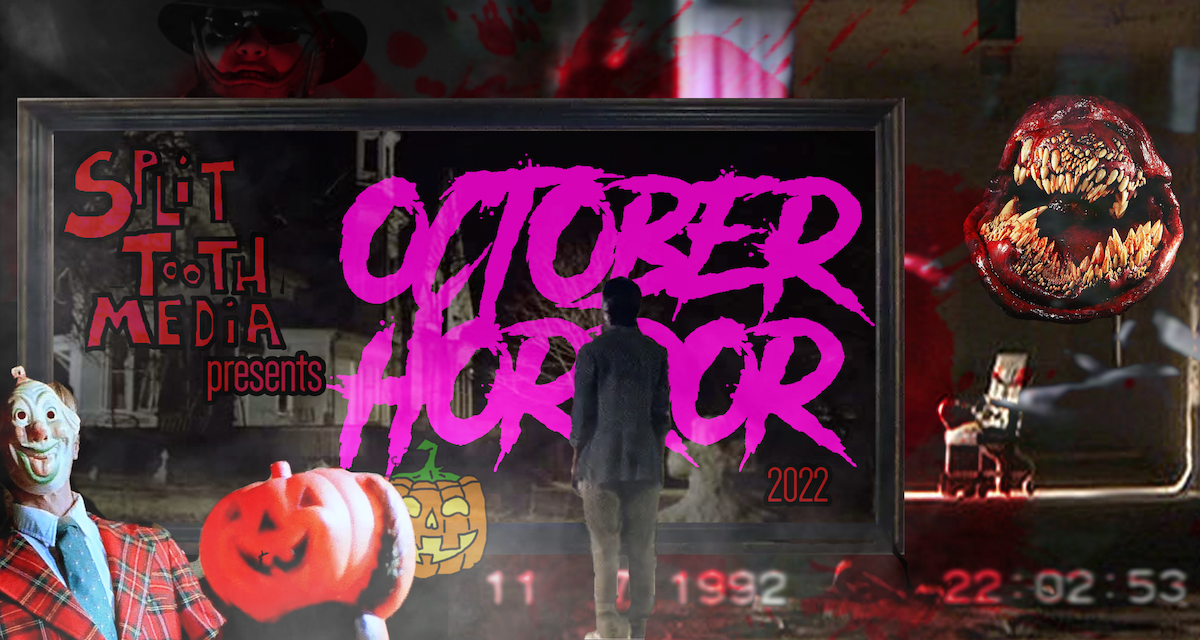
- Deadly Spawn co-writer John Dods is listed on IMDB as the uncredited actor and creator of the Nightbeast; Ted Bohus worked as a producer on the film.

